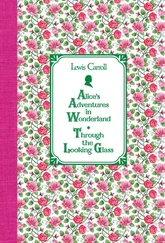Russell, B. 1924. Logical atomism. Rpt. in Bertrand Russell: Logic and knowledge. Essays, 1901-1950 , ed. R. C. Marsh, 321-44. London: Routledge, 2004.
– -. 1983. Cambridge essays, 1888-99 . Ed. K. Blackwell et al. London: Allen and Unwin.
Sahlins, M. 1976. Colors and cultures. Semiotica 16:1-22.
Sampson, G. 2005. The “language instinct” debate. London: Continuum.
– -. 2009. A linguistic axiom challenged. In Sampson et al. 2009.
Sampson, G., D. Gil, and P. Trudgill, eds. 2009. Language complexity as an evolving variable. Oxford: Oxford University Press.
Sapir, E. 1921. Language: An introduction to the study of speech . New York: Harcourt, Brace and Company.
– -. 1924. The grammarian and his language. American Mercury 1: 149-55. Rpt. in Selected writings of Edward Sapir in language, culture, and personality , ed. D. G. Mandelbaum. Berkeley: University of California Press, 1963.
– -. 1931. Conceptual categories in primitive languages. Paper presented at the meeting of the National Academy of Sciences, New Haven, CT, Nov. 1931. Abstracted in Science 74:578.
Schleicher, A. 1860. Die deutsche Sprache . Stuttgart: J. G. Cotta.
Schultze-Berndt, E. 2006. Sketch of a Jaminjung grammar of space. In Levinson and Wilkins 2006, 103-4.
Sera, M. D., C. Elieff, J. Forbes, M. C. Burch, W. Rodriguez, and D. P. Dubois. 2002. When language affects cognition and when it does not: An analysis of grammatical gender and classification. Journal of Experimental Psychology : General 131:377-97.
Shaw, G. B. 1921. Back to Methuselah . London: Constable.
Sinnemäki, K. 2009. Complexity in core argument marking and population size. In Sampson et al. 2009.
Skard, S. 1946. The use of color in literature. A survey of research. Proceedings of the American Philosophical Society 90:163-249.
Slobodín, R. 1978. W. H. R. Rivers. New York: Columbia University Press.
Steiner, G. 1975. After Babel: Aspects of language and translation . Oxford: Oxford University Press.
Swadesh, M. 1939. Edward Sapir. Language 15:132-35.
Tan, L. H., A. H. D. Chan, P. Kay, P. L. Khong, L. K. C. Yip, and K. K Luke. 2008. Language affects patterns of brain activation associated with perceptual decision. Proceedings of the National Academy of Sciences 105 (10):4004-09.
Tennyson, H. T. 1897. Alfred Lord Tennyson: A memoir, by his son. Vol. 1. London: Macmillan.
Titchener, E. B. 1916. On ethnological tests of sensation and perception with special reference to tests of color vision and tactile discrimination described in the reports of the Cambridge anthropological expedition to Torres Straits. Proceedings of the American Philosophical Society 55:204-36.
Trudgill, P. 1992. Dialect typology and social structure. In Language contact: Theoretical and empirical studies , ed. E. H. Jahr, 195-211. Berlin: Mouton.
Tsunoda, T. 1981. The Djaru language of Kimberley, Western Australia . Canberra: Research School of Pacific Studies.
Turner, R. S. 1994. In the eye’s mind: Vision and the Helmholtz-Hering Controversy. Princeton: Princeton University Press.
Tylor, E. B. 1871. Primitive culture: Researches into the development of mythology, philosophy, religion, art, and custom. London: J. Murray.
Valberg, A. 2005. Light, vision, color . Hoboken: Wiley.
Valdez, P., and A. Mehrabian. 1994. Effects of color on emotions. Journal of Experimental Psychology: General 123: 394-409.
Vaugelas, F. de C. 1738. Remarques de M. de Vaugelas sur la langue françoise, avec des notes de Messieurs Patru & T. Corneille. Paris: Didot.
Veit, P. F. 1976. Fichtenbaum und Palme. Germanic Review 51:13-27.
Virchow, R. 1878. Die zur Zeit in Berlin anwesenden Nubier. Verhandlungen der Berliner Gesellschaft für Anthropologie , Ethnologie , und Urgeschichte 333-55.
– -. 1879. Über die im letzten Monat in Berlin ausgestellten Nubier, namentlich den Dinka. Verhandlungen der Berliner Gesellschaft für Anthropologie , Ethnologie , und Urgeschichte 388-95.
Vygotsky, L. S. 1987. Thinking and speech: Collected works of L. S. Vygotsky . Vol. 1. New York: Plenum Press.
Wallace, A. R. 1858. On the tendency of varieties to depart indefinitely from the original type. In C. R. Darwin and A. R. Wallace, On the tendency of species to form varieties; and on the perpetuation of varieties and species by natural means of selection. Journal of the Proceedings of the Linnean Society of London, Zoology 3:46-50.
– -. 1877. The colours of animals and plants. Macmillan’s Magazine 36: 384-408, 464-71.
– -. 1878. Tropical nature and other essays. London: Macmillan.
Walser, M. 1983. Heines Tränen. Liebeserklärungen , 195-96. Frankfurt am Main: Suhrkamp, 1983.
Wassmann, J., and P. R. Dasen. 1998. Balinese spatial orientation: Some empirical evidence of moderate linguistic relativity. Journal of the Royal Anthropological Institute 4 (4):689-711.
Waxman, S. R., and A. Senghas. 1992. Relations among word meanings in early lexical development. Developmental Psychology 28:862-73.
Weismann, A. 1892. Über die Hypothese einer Vererbung von Verletzungen. Aufsätze über Vererbung und verwandte biologische Fragen. Jena: G. Fischer.
Wemyss Reid, T. 1899. The life of William Ewart Gladstone . London: Cassell.
Wharton, W. J. L., ed. 1893. Captain Cook’s journal during his first voyage round the world made in H.M. Bark “Endeavour,” 1768-71 : A literal transcription of the original mss. : with notes and introduction . Rpt. Forgotten Books, 2008.
Whiting, R. M. 1987. Old Babylonian letters from Tell Asmar . Chicago: University of Chicago.
Whitney, W. D. 1875. The life and growth of language . New York: Appleton.
Whittle, P. 1997. W. H. R. Rivers: A founding father worth remembering. Talk given to the Zangwill Club of the Department of Experimental Psychology, Cambridge University, 6 Dec. 1997 (http://www.human-nature.com/science-as-culture/whittle.html).
Whorf, B. 1956. Language, thought, and reality: Selected writings of Benjamin Lee Whorf. Ed. J. B. Carroll. Cambridge: MIT Press.
Widlok, T. 1997. Orientation in the wild: The shared cognition of Hai||om bushpeople. Journal of the Royal Anthropological Institute 3 (22):317-32.
Wilkins, D. P. 2006. Towards an Arrernte grammar of space. In Levinson and Wilkins 2006.
Wilson, G. 1855. Researches on colour-blindness, with a supplement on the danger attending the present system of railway and marine coloured-signals . Edinburgh: Sutherland and Knox.
Wilson, G. D. 1966. Arousal properties of red versus green. Perceptual and Motor Skills 23: 942-49.
Winawer, J., N. Witthoft, M. C. Frank, L. Wu, A. R. Wade, and L. Boroditsky. 2007. Russian blues reveal effects of language on color discrimination. Proceedings of the National Academy of Sciences 104 (19):7780-85.
Wittgenstein, L. 1922. Tractatus logico-philosophicus . Intro. Bertrand Russell. London: Kegan Paul.
Woodworth, R. S. 1910a. Racial differences in mental traits. Address of the vice president and chairman of Section H-Anthropology and Psychology-of the American Association for the Advancement of Science, Boston, 1909. Science 31:171-86.
– -. 1910b. The puzzle of color vocabularies. Psychological Bulletin 7:325-34.
Young, R. M. 1970. Mind , brain, and adaptation in the nineteenth century: Cerebral localization and its biological context from Gall to Ferrier . Oxford: Oxford University Press.
Читать дальше











